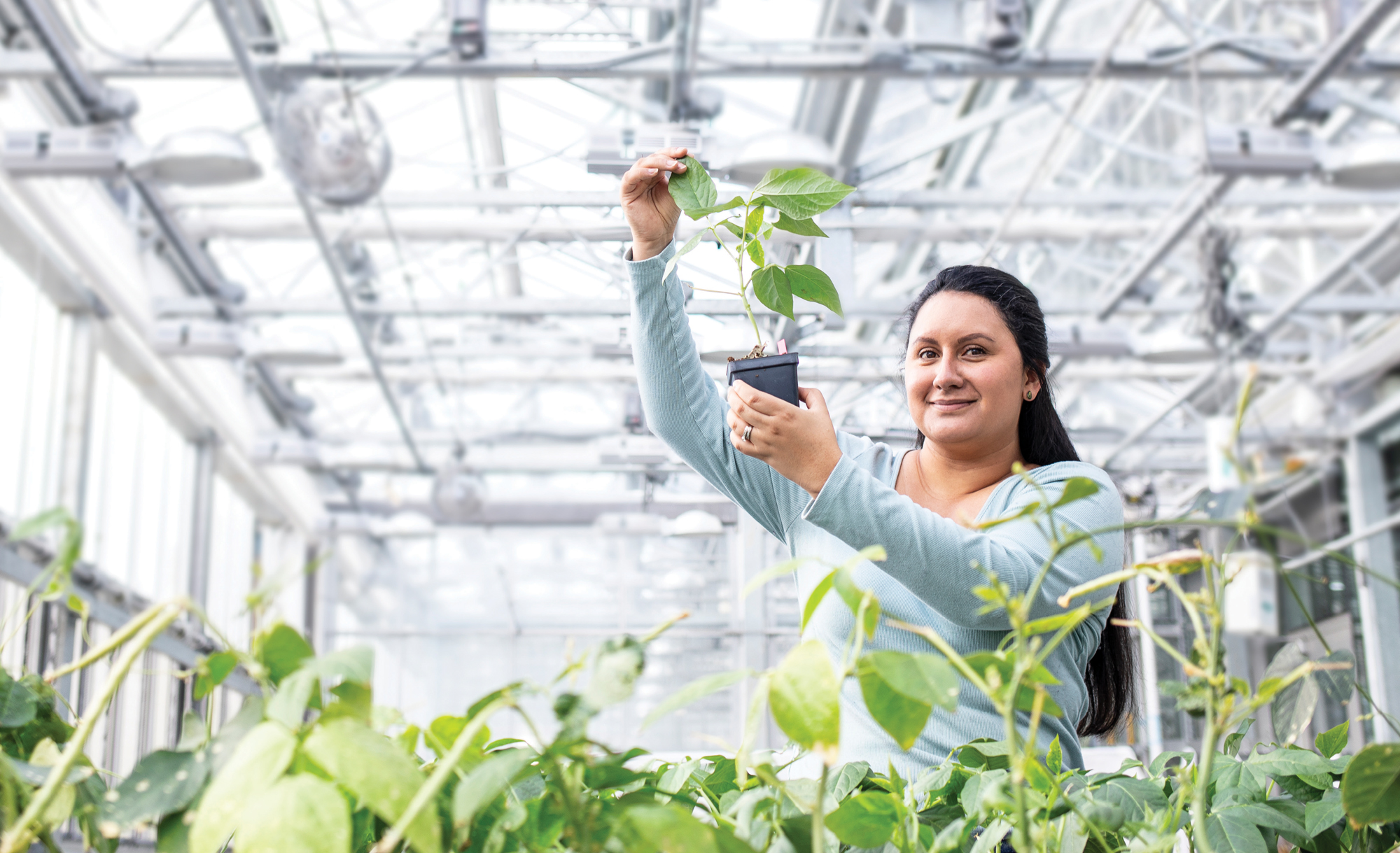

When she encounters a plant—in the lab or the greenhouse—Natalia Guayazán Palacios is curious how it thrives and survives. “They’re incredible organisms doing a ton of things,” she marvels, “even when they’re just sitting around.” This fascination drives the heart of the fourth-year doctoral student’s research in the UW Department of Biology, where she studies how plants defend themselves from danger.
Like humans, plants have immune systems that detect harmful organisms like viruses and bacteria. By understanding how some plants protect themselves, Guayazán Palacios hopes we can help other plants improve their own defenses—as an alternative to the use of pesticides and other chemicals that can be toxic to agricultural workers and to other plants.
Agriculture is close to home for Guayazán Palacios, who grew up in Colombia, a major producer of coffee, fruits and vegetables. She initially studied microbiology to better understand the relationship between crops and microorganisms, but she was also intrigued by human immunology. At the UW, she found the best of both worlds in Professor Adam Steinbrenner’s innovative plant immunology research.
Combining these interests, Guayazán Palacios is now investigating how a plant uses immune receptors to detect threatening herbivores like caterpillars—research made possible by donor-funded grants.
Across the UW, graduate students help advance research and knowledge—and much of that innovation is powered by philanthropy. Guayazán Palacios has experienced first-hand how donors are contributing to her research. Thanks to this support, she says, “We’re making discoveries and advances in a very exciting field.”